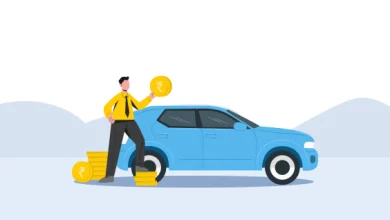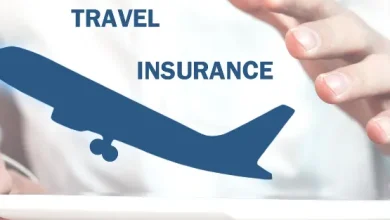
Car accidents can be stressful, but understanding how car insurance works in these situations can simplify the process and ensure financial protection. This guide provides a comprehensive look at how car insurance policies operate after an accident, helping drivers navigate claims, coverage, and responsibilities effectively.
Key Steps After an Accident
- Ensure Safety First
Put safety first by looking for injuries and, if you can, relocating to a secure area. Call emergency services for medical help or if there’s significant property damage. - Document the Scene
Take pictures of the damage to the vehicle, the accident scene, and any obvious injuries. Discuss insurance details and contact details with other drivers. - Notify Your Insurance Provider
Notify your insurance company of the accident as soon as you can. Many companies have apps or hotlines for quick reporting. Be prepared to provide details about the incident.

How Coverage Applies After an Accident
Car insurance policies typically include several types of coverage, each designed to address specific aspects of an accident:
- Liability Coverage
- What It Covers: If you are at fault, liability insurance covers the cost of property damage and injuries to the other party.
- Limits: Each policy has limits on how much it will pay per accident. If damages exceed your limits, you may be personally responsible for the remaining amount.
- Collision Coverage
- What It Covers: This pays for repairs to your vehicle, regardless of fault.
- Deductible: You’ll need to pay a deductible before the insurer covers the rest.
- Comprehensive Coverage
- What It Covers: Damages not caused by a collision, such as theft or natural disasters.
- Relevance After an Accident: If your vehicle was damaged by an event like a fallen tree after the crash, this coverage would apply.
- Personal Injury Protection (PIP) or Medical Payments
- What It Covers: Medical expenses for you and your passengers, regardless of fault.
- Additional Benefits: Some policies cover lost wages or rehabilitation costs.
- Uninsured/Underinsured Motorist Coverage
- What It Covers: If the at-fault driver doesn’t have insurance or has insufficient coverage, this helps pay for your damages.
Claims Process
- Filing the Claim
After notifying your insurer, provide necessary documentation such as photos, police reports, and medical records. - Investigation
The insurance company will investigate to determine fault and assess the damages. This may involve speaking with witnesses or reviewing the police report. - Settlement Offer
Once the investigation is complete, the insurer will make a settlement offer based on the policy’s coverage and limits. - Repair or Replacement
If your vehicle is repairable, the insurer will cover repair costs up to the vehicle’s actual cash value. If it’s totaled, they’ll pay you the value of the car minus your deductible.
Factors Influencing the Outcome
- Fault Determination
Fault is crucial in deciding which insurance policy pays for damages. Some states follow an “at-fault” system, while others adhere to “no-fault” rules where each driver’s insurer covers their own damages. - Policy Limits and Deductibles
- Your coverage is only valid up to the limits specified in your policy.
- Your out-of-pocket expenses prior to coverage taking effect are known as deductibles.
- State Laws
Laws vary by state regarding required coverage, fault determination, and timeframes for filing claims.
What If the Other Driver Is Uninsured?
If the other driver lacks insurance, you may rely on your uninsured motorist coverage. Without this, you might need to pursue legal action or pay for damages yourself.
Tips for Avoiding Common Pitfalls
- Review Your Policy Regularly
Ensure your coverage matches your needs, including liability limits and collision coverage. - Communicate Clearly with Your Insurer
Provide accurate and detailed information to avoid claim delays. - Know Your Rights
Familiarize yourself with state laws and the claims process to advocate for a fair settlement. - Work with Approved Repair Shops
Many insurers have partnerships with trusted repair facilities, streamlining the repair process.
How to Prepare for Future Accidents
- Maintain Adequate Coverage
Make sure your coverage covers potential hazards by reviewing it on a regular basis. - Keep Emergency Kits in Your Car
Include first-aid supplies, a phone charger, and important contact numbers. - Understand Your Policy’s Exclusions
Some policies don’t cover certain damages or incidents, like those caused by intentional acts.
Conclusion
Understanding how car insurance works after an accident empowers drivers to navigate the process with confidence. By knowing your policy, communicating effectively with your insurer, and following the proper steps, you can minimize stress and financial burdens. As policies and technologies evolve, staying informed will ensure you remain adequately protected.
FAQs :
1. What should I do right away following a collision?
After an accident:
- Make sure everyone is safe, and if needed, contact emergency services.
- Document the scene with photos, videos, and witness statements.
- Exchange information with the other driver(s), including insurance details.
- Notify your insurance company as soon as possible.
2. Will my insurance cover all damages after an accident?
Coverage depends on your policy type:
- Liability Insurance: Covers damages to the other party if you are at fault.
- Regardless of who is at blame, collision coverage covers the cost of repairs for your car.
- Comprehensive Coverage: Covers non-collision damages (e.g., theft, weather).
Check your policy for deductibles and limits.
3. Do I have to notify my insurance provider about the accident?
Yes, even for minor accidents, it’s advisable to inform your insurer. Failure to report could lead to complications if claims are filed later.
4. Will submitting a claim result in an increase in my premiums?
Your premiums might increase, especially if you were at fault. Nonetheless, some insurance companies provide accident forgiveness schemes that stop rate hikes after the first incident.



